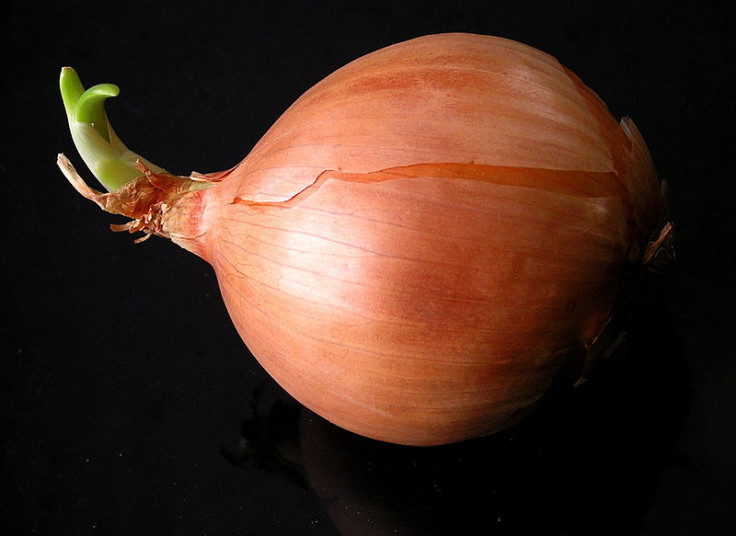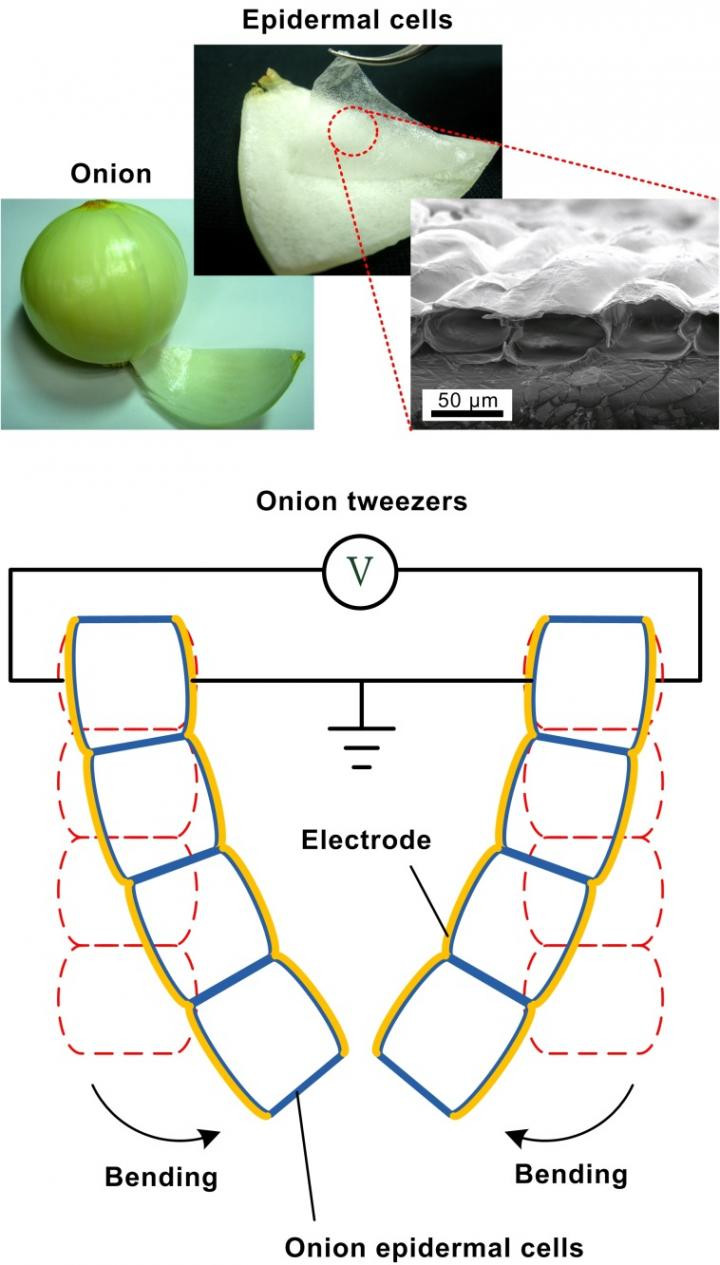Gold-plated onion cells used to create artificial muscles

Gold-plated onion cells have been used to create artificial muscles that can expand and contract to bend in different directions.
The onion epidermis – the thin skin just beneath the surface of the root vegetable – is a thin and translucent layer of cells arranged in a tightly-packed lattice.
Scientists at the National Taiwan University thought the cells may be a viable candidate of creating a more versatile artificial muscle that would be more flexible than current lab-made muscles, which can either bend or contract, but not at the same time.
Lead researcher Wen-Pin Shih said: "The initial goal was to develop an engineered microstructure in artificial muscles for increasing the actuation deformation [the amount the muscle can bend or stretch when triggered]. One day, we found that the onion's cell structure and its dimensions were similar to what we had been making."
In the study, published in the journal Applied Physical Letters, researchers treated the cells with acid to remove the protein that makes the cell walls rigid. Then then coated both sides with gold.

When a current flowed through the gold electrodes, the onion cells bent and stretched like a real muscle.
Shih said they made the top and bottom electrodes a different thickness, so when the cell stiffens it becomes asymmetric from top to bottom – this gave the researchers control over the muscle's response.
Low voltage made them expand and flex downwards, while a high voltage made them contract and flex upwards. To test the muscles, they converted the onions into a pair of tweezers, which they used to pick up a cotton wool ball.
"We found that the single-layer lattice structure can generate unique actuation modes that engineered artificial muscle has never achieved before," Shih said.
The scientists now hope to increase the lifting power of the muscles: "In the future, more research will be conducted to increase the maximum displacement and output force, while simultaneously minimising the applied voltage," the authors concluded.
© Copyright IBTimes 2025. All rights reserved.






















